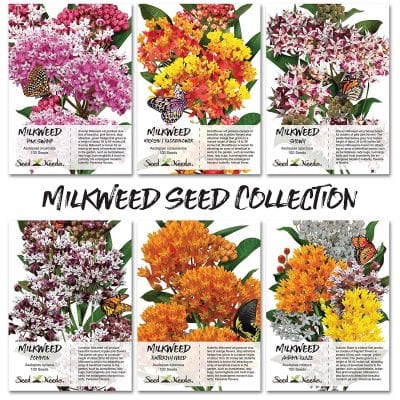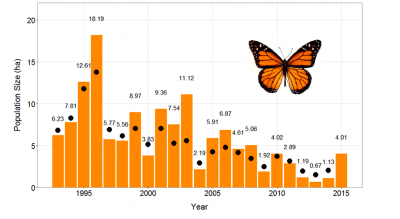Category Archives: ecosystem
My Sustainability Action
Turning The Lights Off
Milkweed (Asclepias spp.) Garden
For the 2018 Presidential Grant it would be not only aesthetically beautiful for the members of our college community, but incredibly sustainable for Union to plant a milkweed garden in front of Schaffer library (rather than the present lack luster shrubbery). Now you might be asking–why milkweed? What’s so cool about milkweed? Can this plant produce both milk AND weed? Well no, BUT milkweed is the sole plant monarch caterpillars are able to eat and the only plant monarch butterflies lay their eggs in. The monarch population since the mid 1990s has been invariably decreasing and this is directly due to the deforestation of the milkweed plant.
In a recent U.S. Geological survey they have found that we will need to plant an additional 1.8 billion milkweed stems in North America in hopes of restoring the monarch community to what it once was. This is an especially important mission for those who live in the United States because the monarch butterfly is our national butterfly(; although, this job should not be the sole burden of the United States and the monarch butterfly should not be the only insect we work to repopulate because of its’ national status). This planting would be relatively inexpensive (6 milkweed seed packets for only $18 on amazon with that student prime!), extremely impactful to the monarch population, and beautify our campus further. For more information on the falling monarch population in North America click on the graph below:
Water Waste
The use of plastic water bottles can be harmful to the environment specially when not recycled properly. A proposal that I have in mind to eliminate the consumption of plastic water bottles, is to install a water fountain in every house. This may seem like a difficult challenge or expensive but in the long run of our community, it would benefit everyone greatly. The new water fountains would help students spend less money on water, while eliminate the use of plastics water bottles. The water fountains would also provide students with the access to clean drinkable water within their own house, without having to struggle.
Plastic vs. Reusable Bags
My proposal for the Green Grant would be to give each first-year a reusable grocery bag. The overall goal of this change would be to reduce the number of disposable plastic bags that are used on campus. This reusable bag would be given to first-year students at orientation, much like the reusable water bottles that were given to my class. These bags’ purpose would be for food and bookstore items. Any students buying snacks, getting upper to go or grabbing a salad from O3, can use the reusable grocery bag. Also, I believe that incentivizing this usage by offering a 3% discount on all bookstore food purchases for students who bring the reusable bag would help encourage the success of the program. Students would save declining, and the planet in the process. If the average size of the new freshman class is about 510 students (rough estimate), then it would cost Union about $0.95 per bag, with a total cost of $484.50. Now, one order of the biodegradable plastic bags that Union currently uses in the bookstore (1000 bags per order), costs $90.29. If the bookstore saw just a 10% decrease in demand for plastic bags per term, that would mean a 30% decrease per academic year; which is significant. Then the college can order fewer plastic bags (ergo spend less money on plastic bags each term), and reduce our waste in a cost-efficient way. The Green Fee Grant is a perfect way to fund this effort and can totally be reasonably implemented next fall.
Sustainable…Pavement?
As I was pulling out of the Nott/Seward parking lot earlier this week, I noticed that the pavement was extremely uneven. As usual, I simply thought to myself that they needed to repave the lot. Well, with this week’s blog theme in mind a thought occurred to me: What if Union repaved the lot with a more sustainable method?
Many ideas have come and gone, and an expert I claim not to be, but perhaps we could go even further than simply using more sustainable concrete alternatives. Working with the sustainability coordinators and other departments on campus, I am curious to see what types of solar or thermal energy could be produced through pavement materials.
Along with economic factors, I could see this being cost effective for Union long-term, especially if proposed as a Green Free or Presidential Green Grant to cover short-term fees. I could not find any material as to the actual cost or probability of any of the previously discussed methods, but I’m curious to see if this would be a possibility.
The Brazilian Amazon
Brazil is now a large industrial nation that leads the world in production of oil and automobile industry that still heavily rely on the consumption of wood. Through the technological development, the nation is thriving in the economic field when exporting goods to other nations. The economic aspect of the world the country is thriving but through the natives of the and they are being destroyed. The Brazilian wilderness is enormous with thousands of different species of creatures and native tribes that are being destroyed to gather wood for economic profit, regardless of the effects on nature. The development of the country has come at the cost of destroying the environment. The removal of natural resources from the environment often creates bad environments for locals to attempt to make a living as they have lived on the land for hundreds of years. Many countries in Latin America are suffering from the exploitation by corporations and natural resources. In order to have a fair policy the natives should be involved in the government decision about their land. There is no clear path for communication for the natives and the modern and forever changing government. The lack of respect and connection to the natives’ culture creates environmental issues that impact the poor communities.
The Basics of Wind Energy
An example of a renewable energy source that I examined was wind energy, which creates electricity by using the wind, and air flows that occur naturally in Earth’s atmosphere. With the creation of wind turbines, we were able to capture kinetic energy that was created by the wind and generate electricity. There are three distinct types of wind energy: Utility-scale wind are wind turbines that range in size from one hundred kilowatts to megawatts. The electricity is delivered to the power grid and then distributed to the end user by electric utilities or power system operators. Distributed or “small” wind single small wind turbines that are below 100 kilowatts and are used to directly power a home, farm or small business and are not connected to the grid. And the third type is generated by Offshore Wind, these turbines that are erected in large bodies of water, usually on the continental shelf. Offshore wind turbines are larger than land-based turbines and can generate more power.
The turbines typically stand a little over 260 feet high and wind measurements are collected, and they direct the turbine to rotate while facing the strongest wind, at the correct angle of its blades to capture energy. Over the course of a year, turbines can generate enough usable electricity over 90 percent of the time. These turbines begin to generate power when the wind reaches six to nine miles per hour and will shut down if the wind reaches over fifty-five miles per hour to avoid damages. The building and maintaining of these wind turbines can provide new jobs and begin the spread of “wind farms”.
Arctic
The arctic has been a section of the world with the clearest negative impact of the effects of climate change. The ice caps are slowly melting, while there are different species of life being threatened through the diminishing food source in this densely populated area. The melting of the ice effects the environment in so many negative ways like releasing trapped bacteria in the ice, eliminating food source that can’t adapt, and creating an unstable life cycle. There are different species of assemblages that have adapted to the living conditions of both above and under the ice, representing 20% of the main algae source of food in the Arctic. The melting caps are causing these limited resource available to the birds, fish, and marine mammals causing many of these animals population to diminish because of the lack of algae. The polar bear is one of the most effected as they really on the smaller food source around that really on algae. The interruption to the life cycle in the Arctic was caused by humans and these animals are suffering without having any major cause in the event. The table shows the decline sea ice in the Arctic Ocean measured annually starting from the 80s to the 10. This correlates to the global warming of the planet, causing global change and the arctic is being impacted in rapid rate. 



